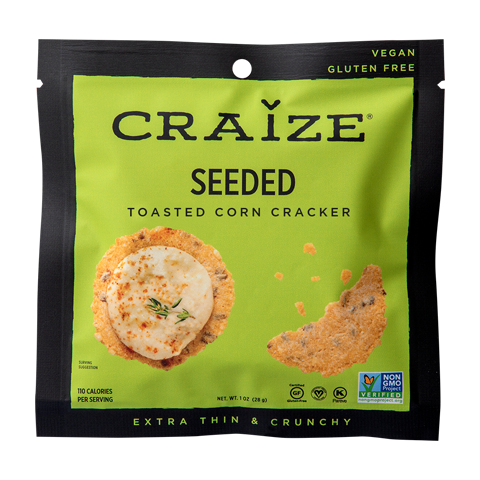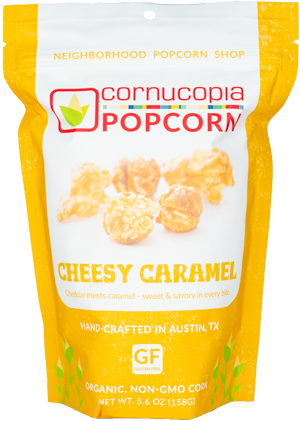When you’re in business, big or small, time is of the essence. Every team is on a schedule, whether it’s releasing a new product, debuting something for the holidays, or just meeting customer demand. Deadlines needed to be hit, and products needed to be in consumers’ hands yesterday.
With the evolution of flexible packaging, there’s a pressing question on everyone’s mind: “How long does it actually take to produce?”
Let’s journey together, balancing idealism with pragmatism, to uncover the manufacturing timeline for flexible packaging in CPG products.
Types of Flexible Packaging for CPG
Flexible packaging isn’t a one-size-fits-all game. The diverse world of CPG demands variety and innovation. But there are a few main types of flexible packaging that you’ll see dominating most shelves at the local store.
Let’s break it down:
Lay Flat Pouches: A three-sided lay flat pouch that’s available with diverse finishes, structures, and films – this style of packaging is everywhere.
Stand up Pouches: These also are available in various films, features, and gusset finishes – think sunflower seeds or beef jerky packaging.
Sachet Packaging: This option is ideal for foods, cosmetics, vitamins, and supplements. Sachet is mainly used for quick use, grab and go options, like sports drink powders.
Rollstock: One of the most affordable ways to spread the gospel of your brand, roll stock is produced with solventless lamination and is widely customizable. (As are all of these options.)
Each type, with its unique design and purpose, comes with its own manufacturing timeline, influenced by factors such as material choice, printing demands, and order volume.
What is the Manufacturing Process for Flexible Packaging Material?
When it comes to the process of flexible packaging getting into your hands, there’s a lot of planning and execution that goes into it.
When a consumer rips into that candy bar, that piece of chocolate covered in nuts has taken a journey beyond its creation. The packaging must be crafted with care, too.
First comes finding the perfect design. Thanks to the digital landscape, the packaging is much more hands-on because a file can be uploaded rather than through the tedious process of creating plates. Digital printing is faster, cheaper, and can be amended to spec with a click.
Behind every package is a journey of transformation and innovation. Here’s a condensed overview:
- Material Selection: Based on the product’s needs, materials like PET, LDPE, or even more eco-friendly options like PLA are chosen. This initial choice determines a lot about the package’s properties and manufacturing time.
- Design & Printing: A pivotal stage. Employing digital printing accelerates the process, offering both high quality and quicker turnarounds. Gone are the days of long waits; with modern techniques, designs come to life faster and more vividly.
- Lamination: A layering process that ensures the product inside stays fresh and the exterior stays resilient. While it may seem straightforward, it’s a delicate dance of precision and expertise.
- Cutting & Pouch Formation: Using machines calibrated for perfection, the material is shaped into the desired packaging format. It’s in this stage that the package begins to take its final form, ready to house products ranging from granola bars to luxury cosmetics.
- Inspection & Shipping: Quality isn’t just a buzzword; it’s a promise. Every package undergoes stringent checks before heading out to brands and consumers.
This process, while streamlined, is influenced by various factors including order volume, customization, and specific material choices, which could extend or shorten the timeline.
Successful Strategies for CPG Manufacturers
In a post-pandemic world, there’s been a hyper-focus on keeping customers happy and knowing customer habits. Brands can arm themselves with information that can impact how their packaging plays within the market.
But, as brands shift into the digital world of flexible packaging, the details matter. CPG manufacturers need this information to see their products sell more.
Time is a precious commodity in the CPG industry. But with the right strategies, manufacturers can navigate the packaging timeline more efficiently:
- Plan Ahead: Recognize peak periods and anticipate needs. It’s more than just foresight; it’s about positioning your brand ahead of the curve.
- Prioritize Digital Printing: In a world that demands speed without sacrificing quality, digital printing is the answer. It offers flexibility, quicker turnarounds, and an unmatched vibrancy in design.
- Maintain Open Communication: With packaging partners, transparency and collaboration cut down misunderstandings and expedite the process.
And then there’s the commitment to staying eco-friendly. Some companies have shifted their brand focus toward finding sustainable solutions by only using packaging that biodegrades and investing in inks that won’t hurt the earth, either.
All these points of view matter when we should order the product, whether we are planning a trial run of a new concept or a holiday edition.
How you take action depends on what the company is trying to achieve, but whatever the plan may be, going digital moves much faster for CPG brands because of the ease of use and speed.
By embracing these strategies, CPG manufacturers can not only reduce manufacturing time but also achieve a competitive edge in the marketplace.
Flexible Packaging Solutions with ePac
No matter the size of your brand or what kind of potato chips you’re selling, ePac can help.
Flexible packaging for CPG products is only one thing we know among many, we’ve seen it all. Our flexible packaging solutions have helped companies of every type. Our sales team knows their stuff, from package design to the right kind of closure you’ll need to store the family’s secret beef jerky that’s now hitting the market.
Whatever your story is, we’d love to help tell it. Let’s get to work.






